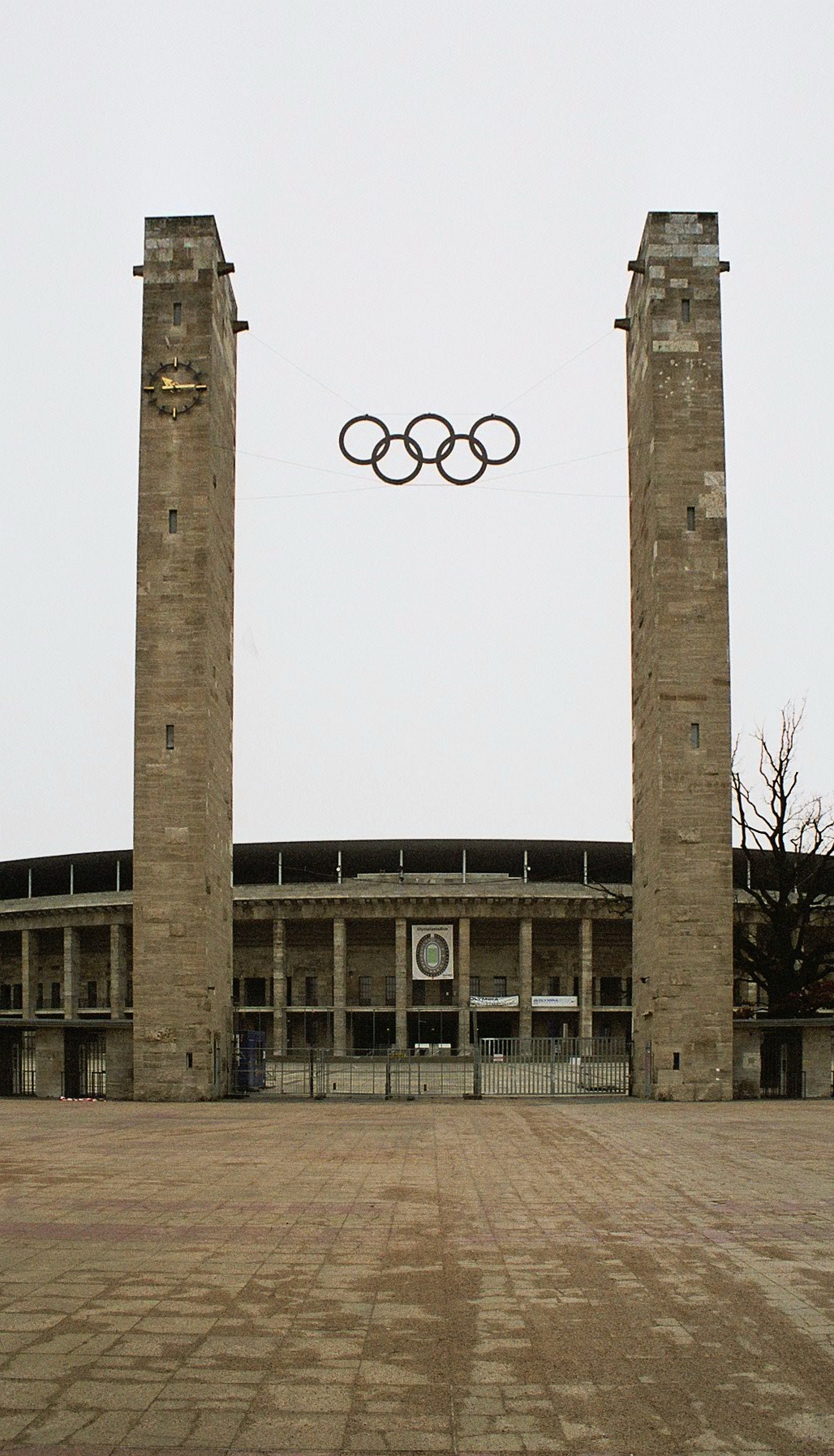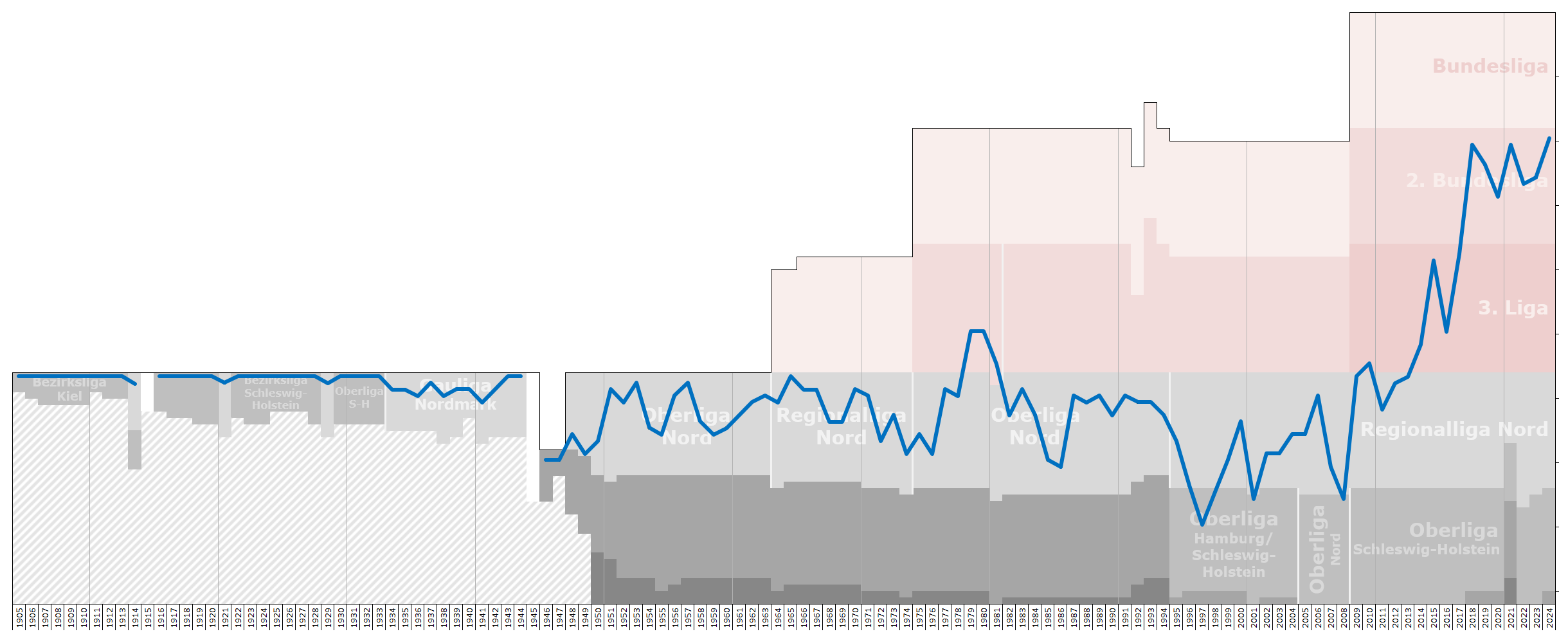|
Gauliga Schleswig-Holstein
The Gauliga Nordmark was the highest football league in the Prussian Province of Schleswig-Holstein and the German states of Hamburg, Lübeck, Mecklenburg-Schwerin, Mecklenburg-Strelitz and parts of Oldenburg from 1933 to 1945. Shortly after the formation of the league, the Nazis reorganised the administrative regions in Germany, and the ''Gaue'' ''Hamburg'', ''Mecklenburg'' and ''Schleswig-Holstein'' replaced the Prussian province and the German states in this northern region of Germany. From 1942, the ''Gauliga Nordmark'' was split into three separate leagues, the ''Gauliga Hamburg'', ''Gauliga Mecklenburg'' and the ''Gauliga Schleswig-Holstein''. The German word ''Nordmark'' can be translated as ''Northern Marches'', referring to the fact that the league covered the northernmost part of the country. Overview Gauliga Nordmark The league was introduced by the Nazi Sports Office in 1933, after the Nazi takeover of power in Germany. It replaced the ''Oberliga Lübeck/Mecklen ... [...More Info...] [...Related Items...] OR: [Wikipedia] [Google] [Baidu] |
1933–34 Gauliga
The 1933–34 Gauliga was the inaugural season of the Gauliga, the first tier of the football league system in Germany from 1933 to 1945. The Gauligas replaced the seven regional championships and the numerous local leagues which previously existed in Germany. The Gauligas were established after the rise of the Nazis to power in 1933. In the season previous to the establishment German football had been sub-divided into almost 70 local tier-one leagues with an average number of 10 clubs per league, resulting in close to 700 top level clubs. These leagues had, up till 1933, played out seven regional championships with the top clubs of those advancing to the national German championship. The league operated in sixteen regional divisions, of which two, the Gauliga Ostpreußen and Gauliga Pommern, were sub-divided into two regional groups again, with the league containing 178 clubs all up. The league champions entered the 1934 German football championship, won by FC Schalke 04 who de ... [...More Info...] [...Related Items...] OR: [Wikipedia] [Google] [Baidu] |
DDR-Oberliga
The DDR-Oberliga (English: ''East German Premier League'' or ''GDR Premier League'') was the top-level association football league in East Germany. Overview Following World War II, separate sports competitions emerged in the occupied eastern and western halves of Germany, replacing the ''Gauligas'' of the Nazi era. In East Germany, a top-flight football competition, the highest league in the East German football league system, was established in 1949 as the DS-Oberliga (''Deutscher Sportausschuss Oberliga'', German Sports Association Upper League). Beginning in 1958, it carried the name DDR-Oberliga and was part of the league structure within the DFV (''Deutscher Fussball-Verband der DDR'', German Football Association of the GDR). In its inaugural season in 1949/50, the DDR-Oberliga was made up of 14 teams with two relegation spots. Over the course of the next four seasons, the number of teams in the division varied and included anywhere from 17 to 19 sides with three or fo ... [...More Info...] [...Related Items...] OR: [Wikipedia] [Google] [Baidu] |
Nazi Sports Office
The National Socialist League of the Reich for Physical Exercise (german: Nationalsozialistischer Reichsbund für Leibesübungen, abbreviated NSRL) was the umbrella organization for sports and physical education in Nazi Germany. The NSRL was known as the German League of the Reich for Physical Exercise (german: Deutscher Reichsbund für Leibesübungen, abbreviated DRL) until 1938. The organization was expanded to Austria after that country's annexation by Nazi Germany. The NSRL was led by the ''Reichssportführer'', who after 1934 simultaneously presided over the German National Olympic Committee. The NSRL's leaders were Hans von Tschammer und Osten (1933–1943), Arno Breitmeyer (1943–1944) and Karl Ritter von Halt (1944–1945). History Preliminary organizations: Effects of the Nazi takeover The 1916 Summer Olympics had been awarded to Berlin, but were canceled because of the duration of World War I. The ''Deutscher Reichsausschuss für Olympische Spiele'' (DRA or DRAfOS) ... [...More Info...] [...Related Items...] OR: [Wikipedia] [Google] [Baidu] |
Marches
In medieval Europe, a march or mark was, in broad terms, any kind of borderland, as opposed to a national "heartland". More specifically, a march was a border between realms or a neutral buffer zone under joint control of two states in which different laws might apply. In both of these senses, marches served a political purpose, such as providing warning of military incursions or regulating cross-border trade. Marches gave rise to titles such as marquess (masculine) or marchioness (feminine) in England, ''marqués'' (masculine) and ''marquesa'' (feminine) in Spanish-speaker countries, as well as in the Catalan and Galician regions, ''marquês'' (masculine) and ''marquesa'' (feminine) in Portuguese language, Portuguese-speaker countries, ''markesa'' (both masculine and feminine) in Basque Country (autonomous community), Euskadi, ''marquis'' (masculine) or ''marquise'' (feminine) in France in the Middle Ages, France and Scotland in the Middle Ages, Scotland, margrave (german: Mar ... [...More Info...] [...Related Items...] OR: [Wikipedia] [Google] [Baidu] |
Northern March
The Northern March or North March (german: Nordmark) was created out of the division of the vast ''Marca Geronis'' in 965. It initially comprised the northern third of the ''Marca'' (roughly corresponding to the modern state of Brandenburg) and was part of the territorial organisation of areas conquered from the Wends. A Lutician rebellion in 983 reversed German control over the region until the establishment of the March of Brandenburg by Albert the Bear in the 12th century. Slavic background During the Migration Period, many Germanic peoples began migrating towards the Roman frontier. In the northeast they were replaced primarily by Slavic peoples (Veleti, later Lutici). The first Slavs were certainly in the Brandenburg area by 720, after the arrival of the Avars in Europe. These Slavs had come via Moravia, where they had arrived in the mid-seventh century. The remnants of the Germanic Semnoni were absorbed into these Slavic groups. The group of people who settled at the ... [...More Info...] [...Related Items...] OR: [Wikipedia] [Google] [Baidu] |
Gau (administrative Division)
''Gau'' (German , nl, gouw , fy, gea or ''goa'' ) is a Germanic term for a region within a country, often a former or current province. It was used in the Middle Ages, when it can be seen as roughly corresponding to an English shire. The administrative use of the term was revived as a subdivision during the period of Nazi Germany in 1933–1945. It still appears today in regional names, such as the Rheingau or Allgäu. Middle Ages Etymology The Germanic word is reflected in Gothic ''gawi'' (neuter; genitive ''gaujis'') and early Old High German ''gewi, gowi'' (neuter) and in some compound names ''-gawi'' as in Gothic (e.g. ''Durgawi'' "Canton of Thurgau", ''Alpagawi'' "Allgäu"), later ''gâi, gôi'', and after loss of the stem suffix ''gaw, gao'', and with motion to the feminine as ''gawa'' besides ''gowo'' (from ''gowio''). Old Saxon shows further truncation to ''gâ, gô''. As an equivalent of Latin ''pagus'', a ''gau'' is analogous with a ''pays'' of the Kingdom of F ... [...More Info...] [...Related Items...] OR: [Wikipedia] [Google] [Baidu] |
Nazis
Nazism ( ; german: Nazismus), the common name in English for National Socialism (german: Nationalsozialismus, ), is the far-right totalitarian political ideology and practices associated with Adolf Hitler and the Nazi Party (NSDAP) in Nazi Germany. During Hitler's rise to power in 1930s Europe, it was frequently referred to as Hitlerism (german: Hitlerfaschismus). The later related term "neo-Nazism" is applied to other far-right groups with similar ideas which formed after the Second World War. Nazism is a form of fascism, with disdain for liberal democracy and the parliamentary system. It incorporates a dictatorship, fervent antisemitism, anti-communism, scientific racism, and the use of eugenics into its creed. Its extreme nationalism originated in pan-Germanism and the ethno-nationalist '' Völkisch'' movement which had been a prominent aspect of German nationalism since the late 19th century, and it was strongly influenced by the paramilitary groups that emerged af ... [...More Info...] [...Related Items...] OR: [Wikipedia] [Google] [Baidu] |
Prussia
Prussia, , Old Prussian: ''Prūsa'' or ''Prūsija'' was a German state on the southeast coast of the Baltic Sea. It formed the German Empire under Prussian rule when it united the German states in 1871. It was ''de facto'' dissolved by an emergency decree transferring powers of the Prussian government to German Chancellor Franz von Papen in 1932 and ''de jure'' by an Allied decree in 1947. For centuries, the House of Hohenzollern ruled Prussia, expanding its size with the Prussian Army. Prussia, with its capital at Königsberg and then, when it became the Kingdom of Prussia in 1701, Berlin, decisively shaped the history of Germany. In 1871, Prussian Minister-President Otto von Bismarck united most German principalities into the German Empire under his leadership, although this was considered to be a "Lesser Germany" because Austria and Switzerland were not included. In November 1918, the monarchies were abolished and the nobility lost its political power during the Ger ... [...More Info...] [...Related Items...] OR: [Wikipedia] [Google] [Baidu] |
Association Football
Association football, more commonly known as football or soccer, is a team sport played between two teams of 11 players who primarily use their feet to propel the ball around a rectangular field called a pitch. The objective of the game is to score more goals than the opposition by moving the ball beyond the goal line into a rectangular framed goal defended by the opposing side. Traditionally, the game has been played over two 45 minute halves, for a total match time of 90 minutes. With an estimated 250 million players active in over 200 countries, it is considered the world's most popular sport. The game of association football is played in accordance with the Laws of the Game, a set of rules that has been in effect since 1863 with the International Football Association Board (IFAB) maintaining them since 1886. The game is played with a football that is in circumference. The two teams compete to get the ball into the other team's goal (between the posts and under t ... [...More Info...] [...Related Items...] OR: [Wikipedia] [Google] [Baidu] |
Holstein Kiel
Kieler Sportvereinigung Holstein von 1900 e.V., simply as KSV Holstein or Kieler SV Holstein, commonly known as Holstein Kiel (), is a German association football and sports club based in the city of Kiel, Schleswig-Holstein. From the 1900s through the 1960s the club was one of the most dominant sides in northern Germany. Holstein appeared regularly in the national playoffs, capturing their most important title, the German football championship in 1912, and finishing as vice-champions in 1910 and 1930. Holstein also won six regional titles and finished as runners-up another nine times. They remained a first-division side until the formation of the Bundesliga in 1963. History Foundation to WWII Holstein Kiel is the product of the merger of predecessor sides Kieler Fußball-Verein von 1900 and Kieler Fußball-Club Holstein. The earliest of these two sides was Kieler Fußball-Verein (later 1. KFV) established on 7 October 1900 out of the membership of the gymnastics club Kieler Mä ... [...More Info...] [...Related Items...] OR: [Wikipedia] [Google] [Baidu] |
1943–44 Gauliga
The 1943–44 Gauliga was the eleventh season of the Gauliga, the first tier of the football league system in Germany from 1933 to 1945. It was the fifth season of the league held during the Second World War and the last completed one. The league operated in thirty-one regional divisions, two more than in the previous season, with the league containing 358 clubs all up, 60 more than the previous season. The league champions entered the 1944 German football championship, won by Dresdner SC who defeated ''Luftwaffe'' team LSV Hamburg 4–0 in the final. It was Dresden's second national championship, having won the competition in the previous season as well. The number of Gauligas, thirty-one, increased by two compare to the previous season because of the splitting off of the Gauliga Osthannover from the Gauliga Südhannover-Braunschweig and the creation of the Gauliga Böhmen und Mähren. The 1943–44 season saw the continued participation of military and police teams, especial ... [...More Info...] [...Related Items...] OR: [Wikipedia] [Google] [Baidu] |





